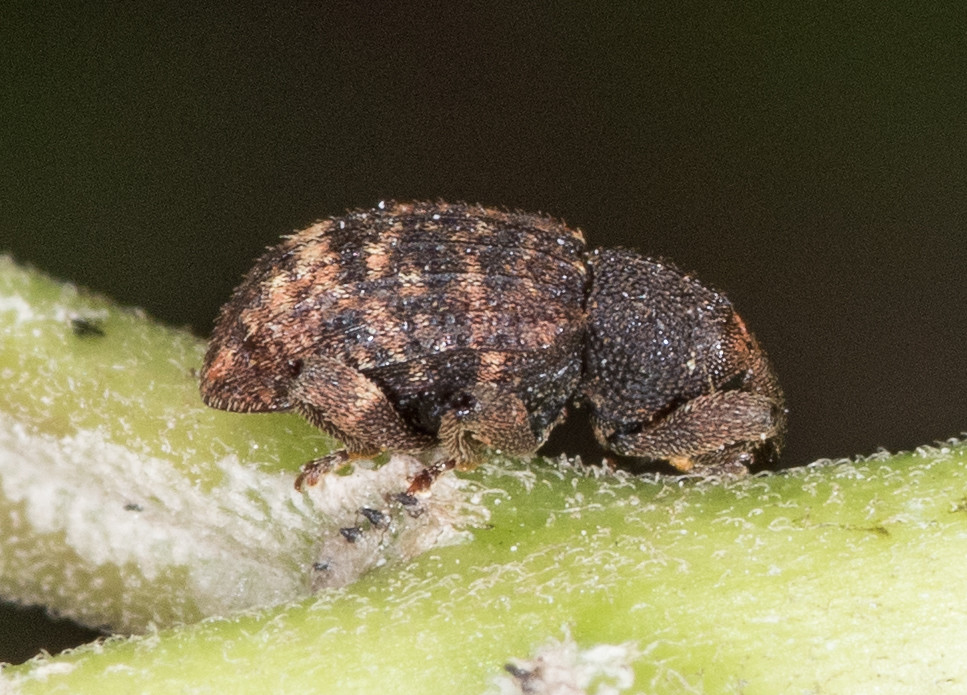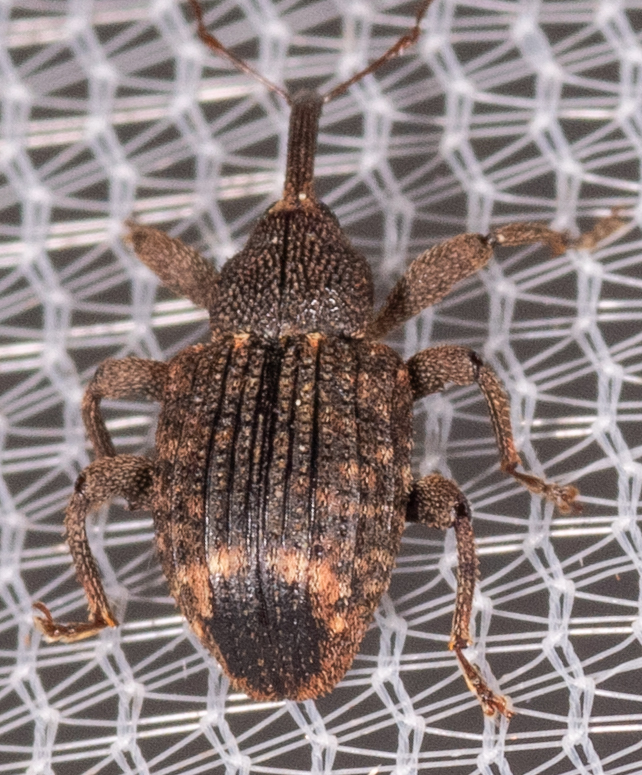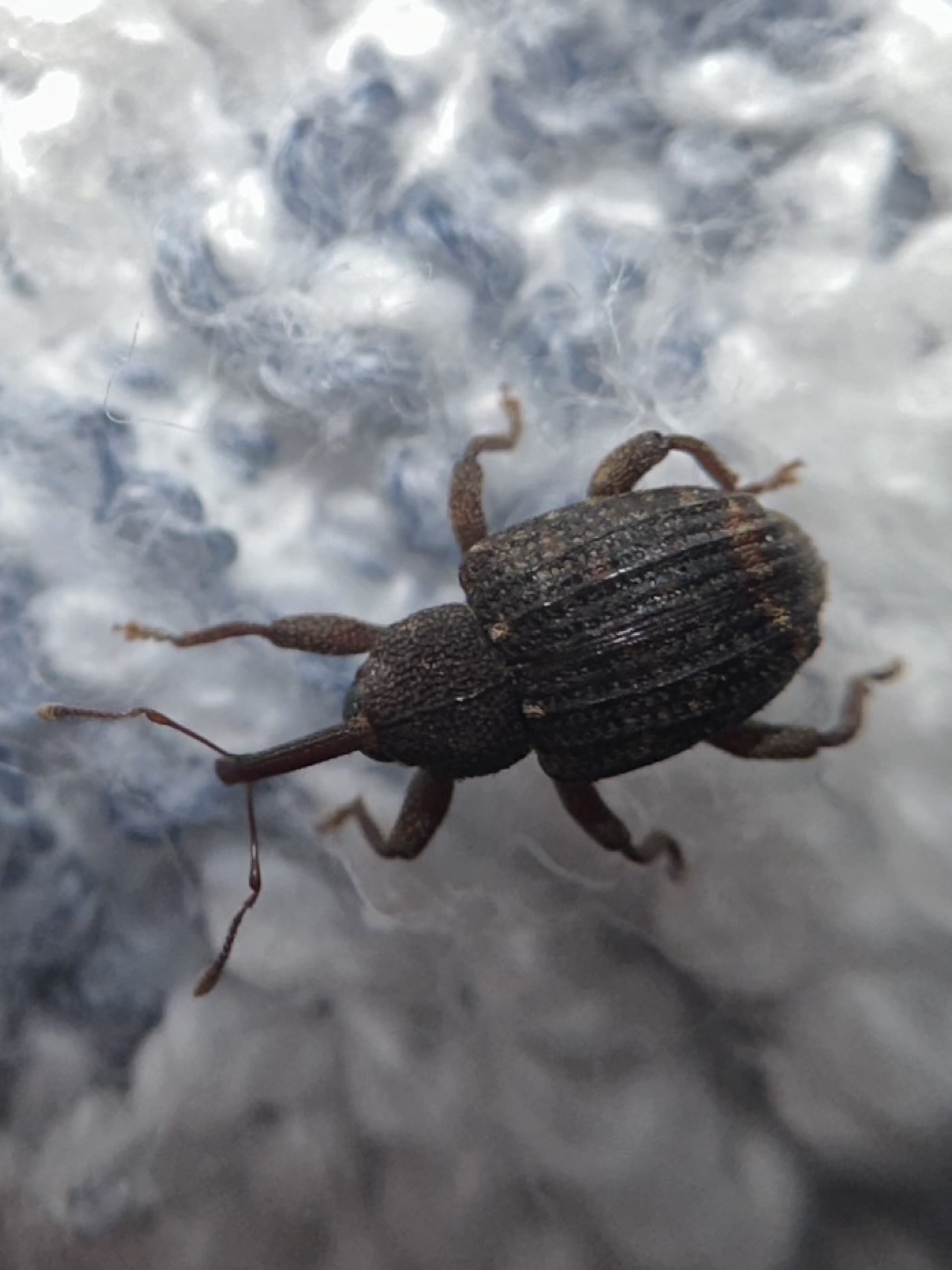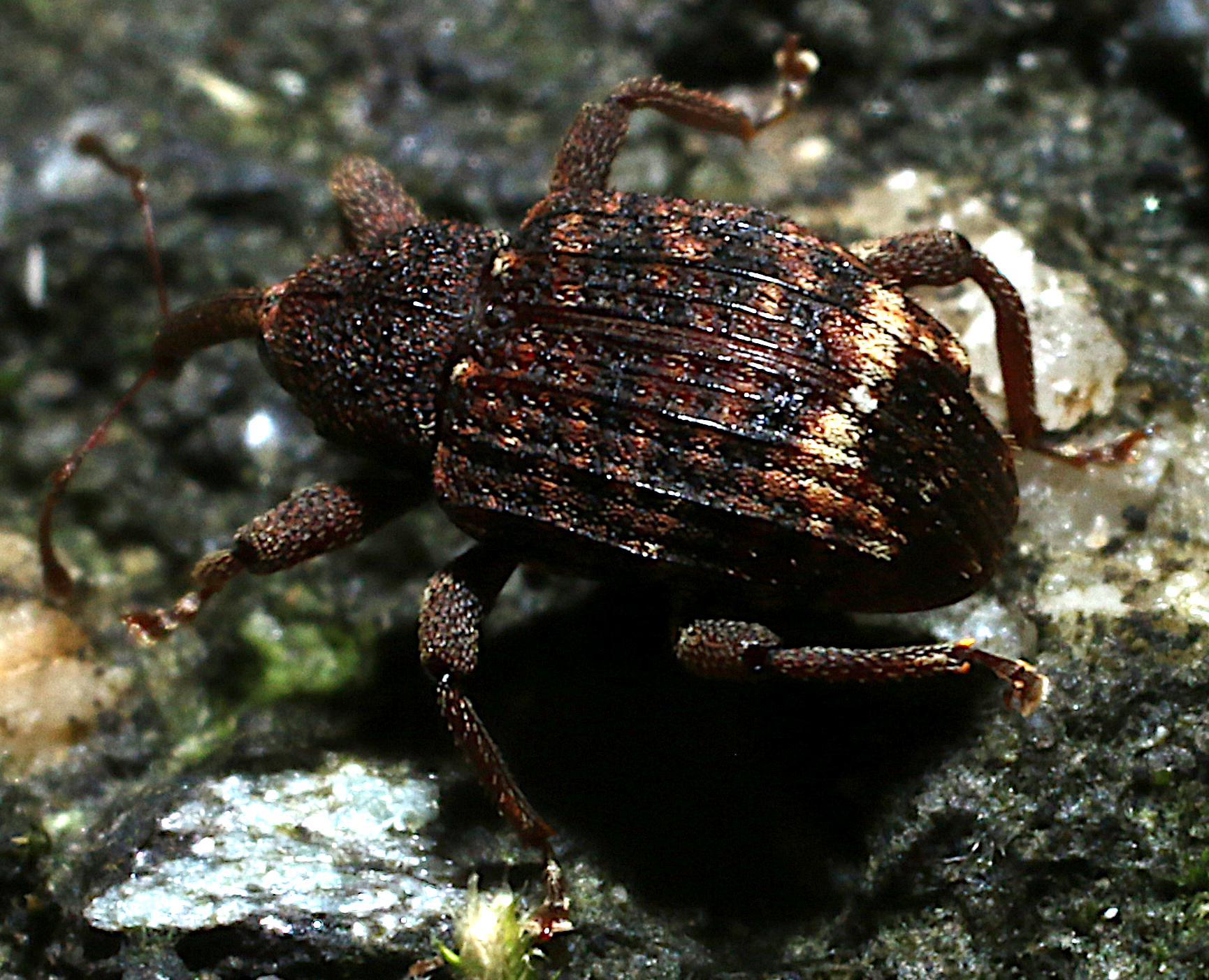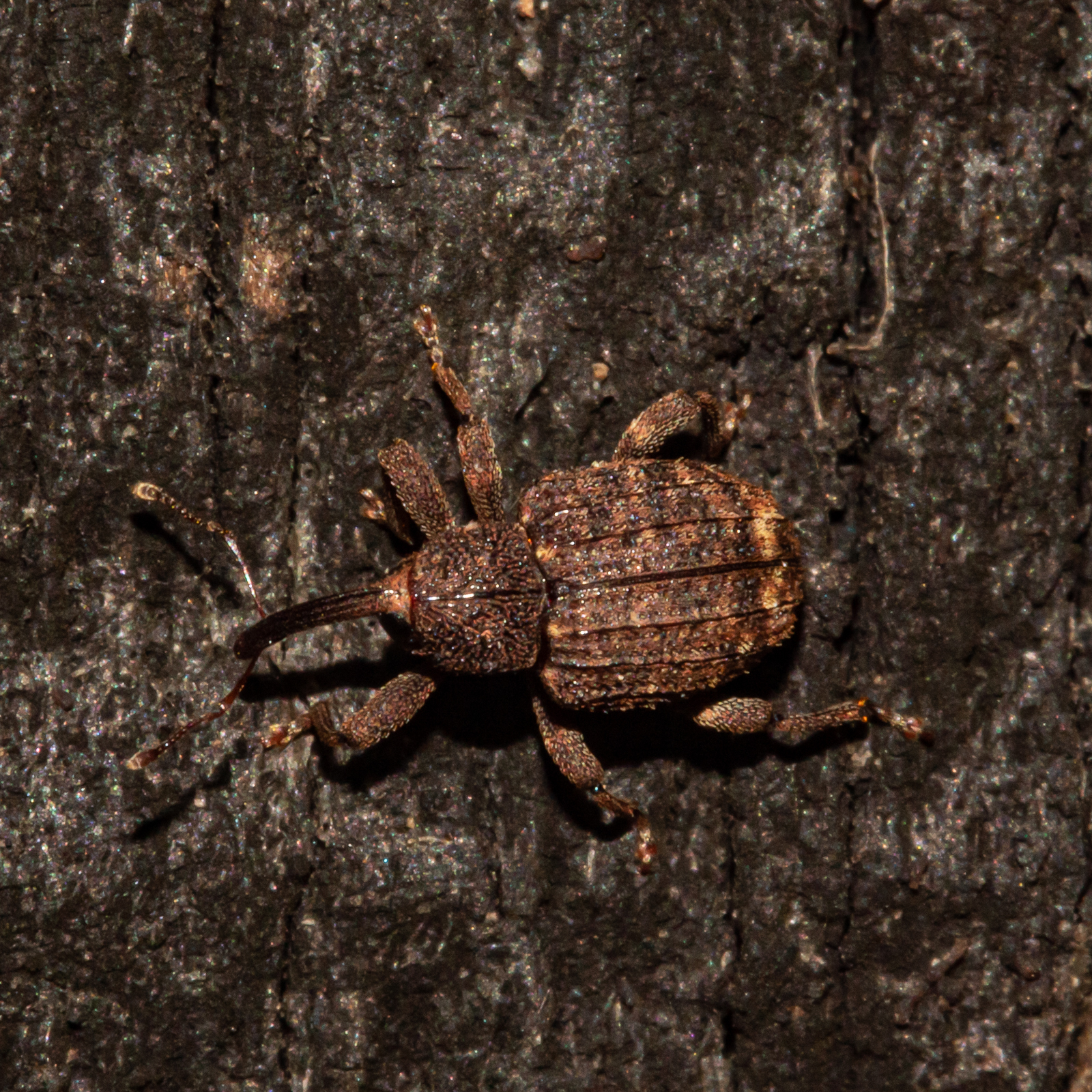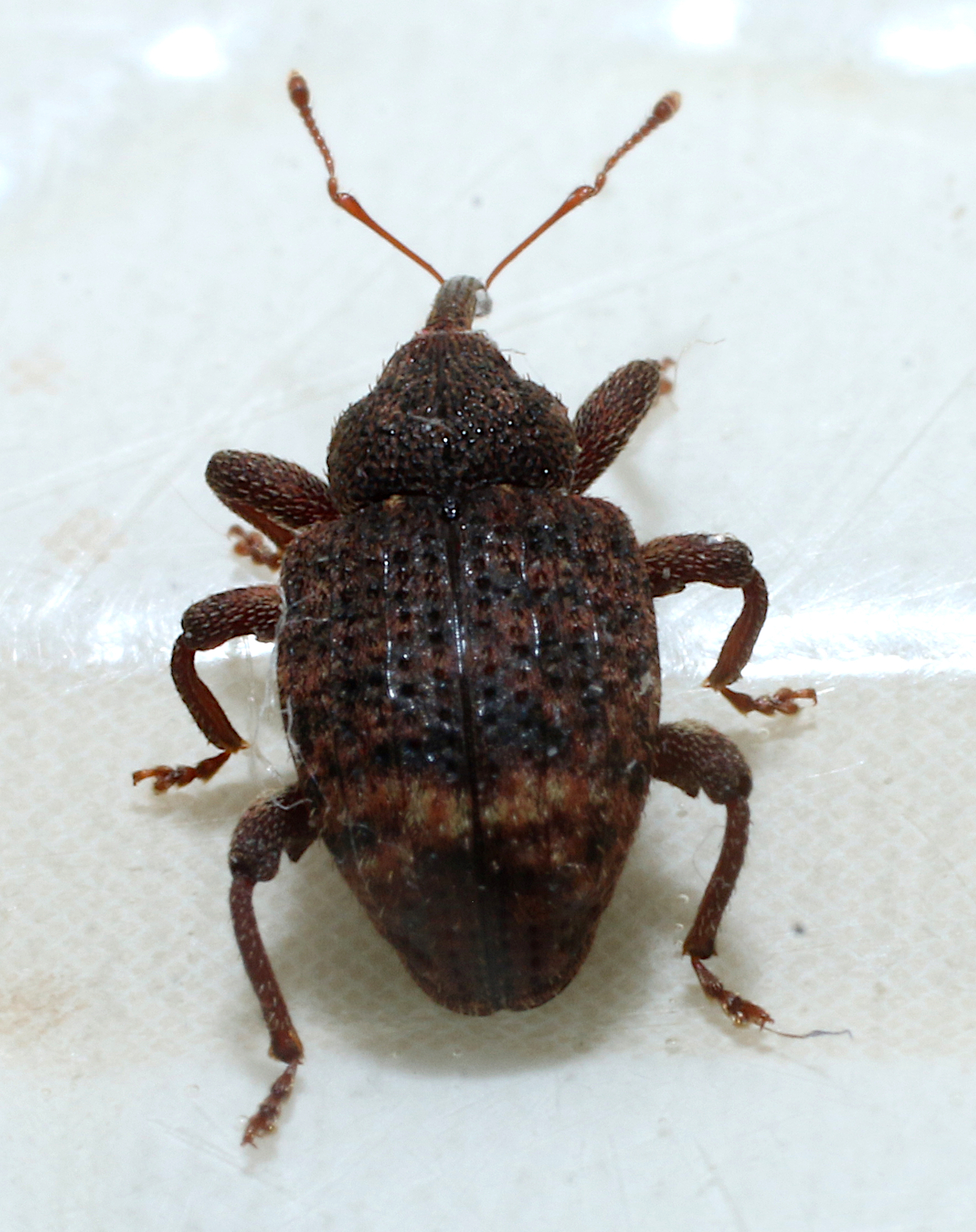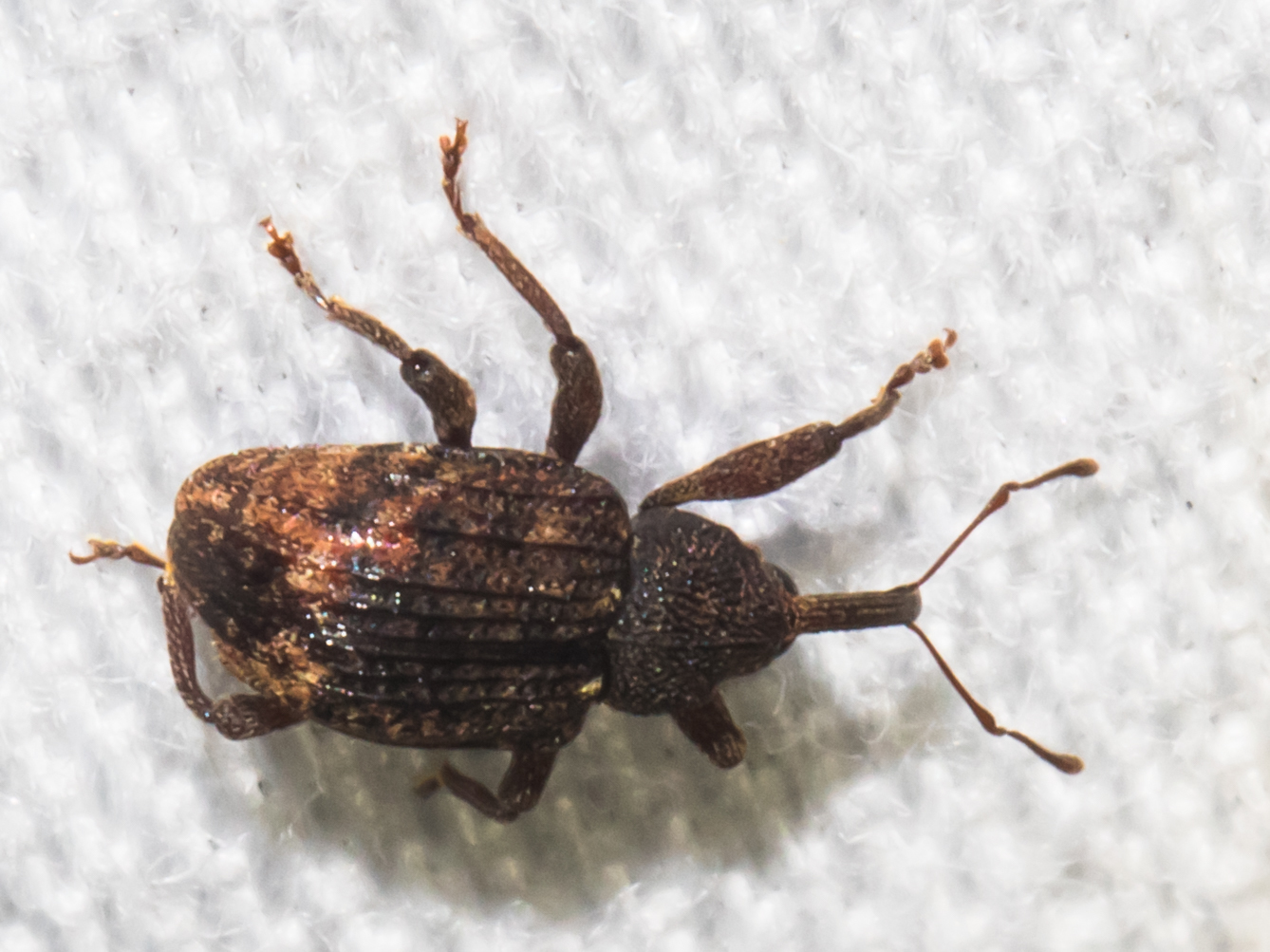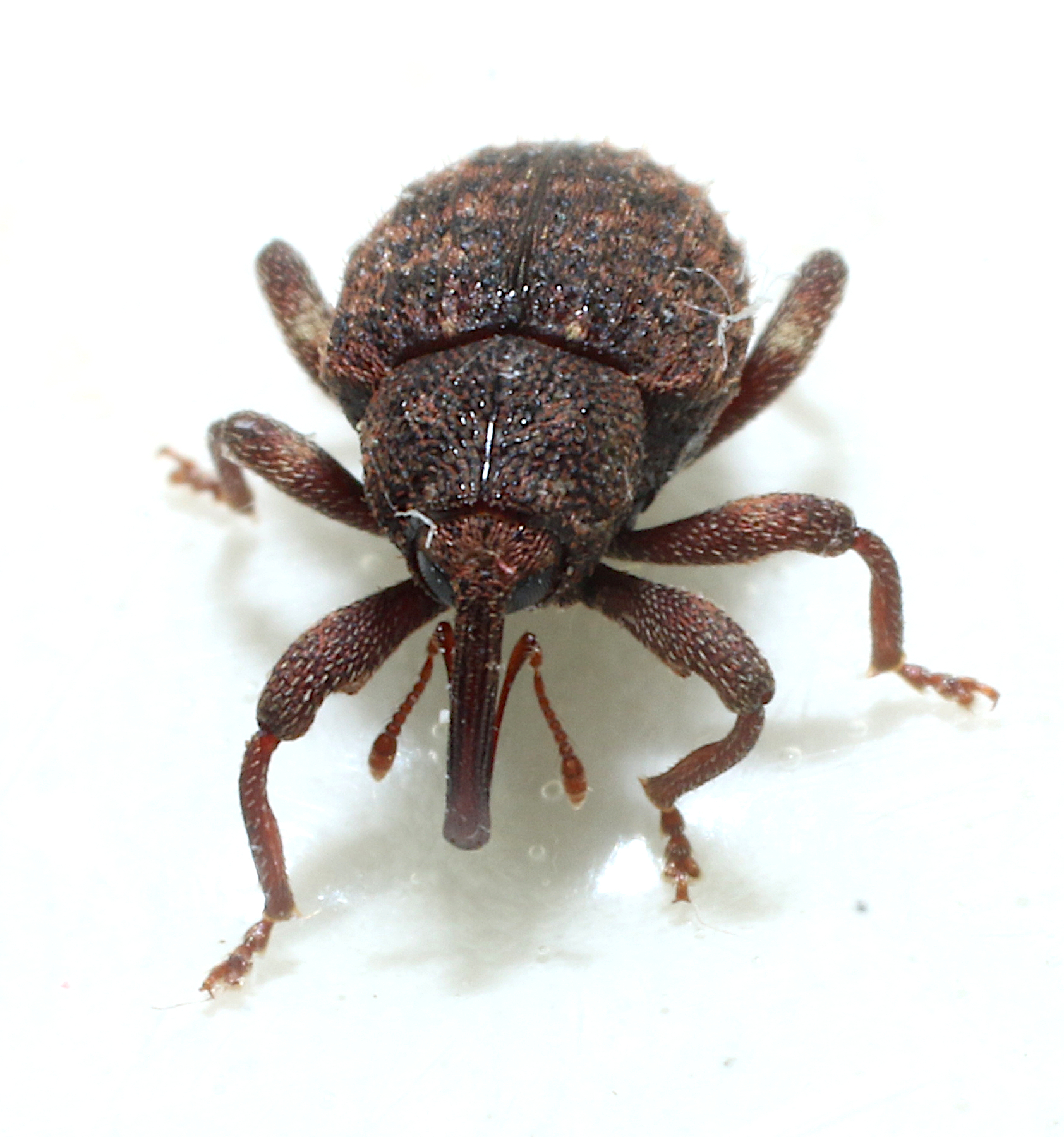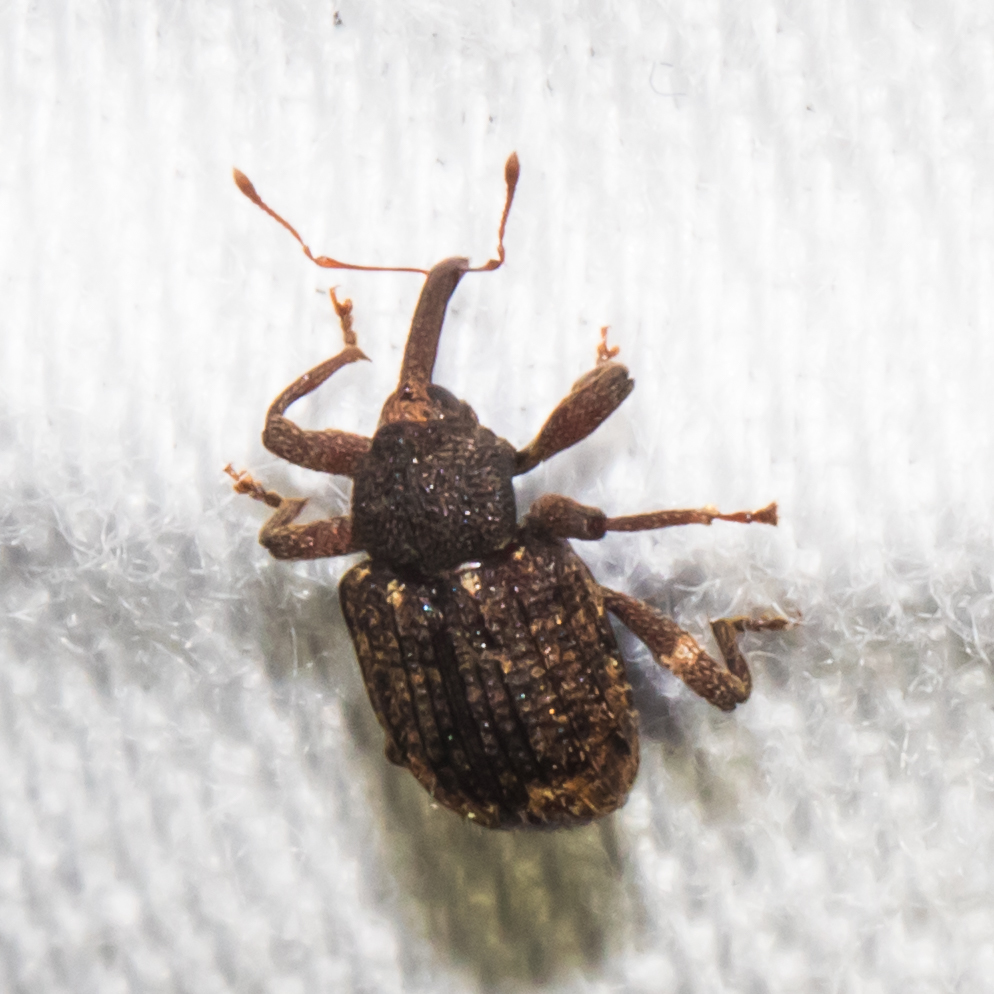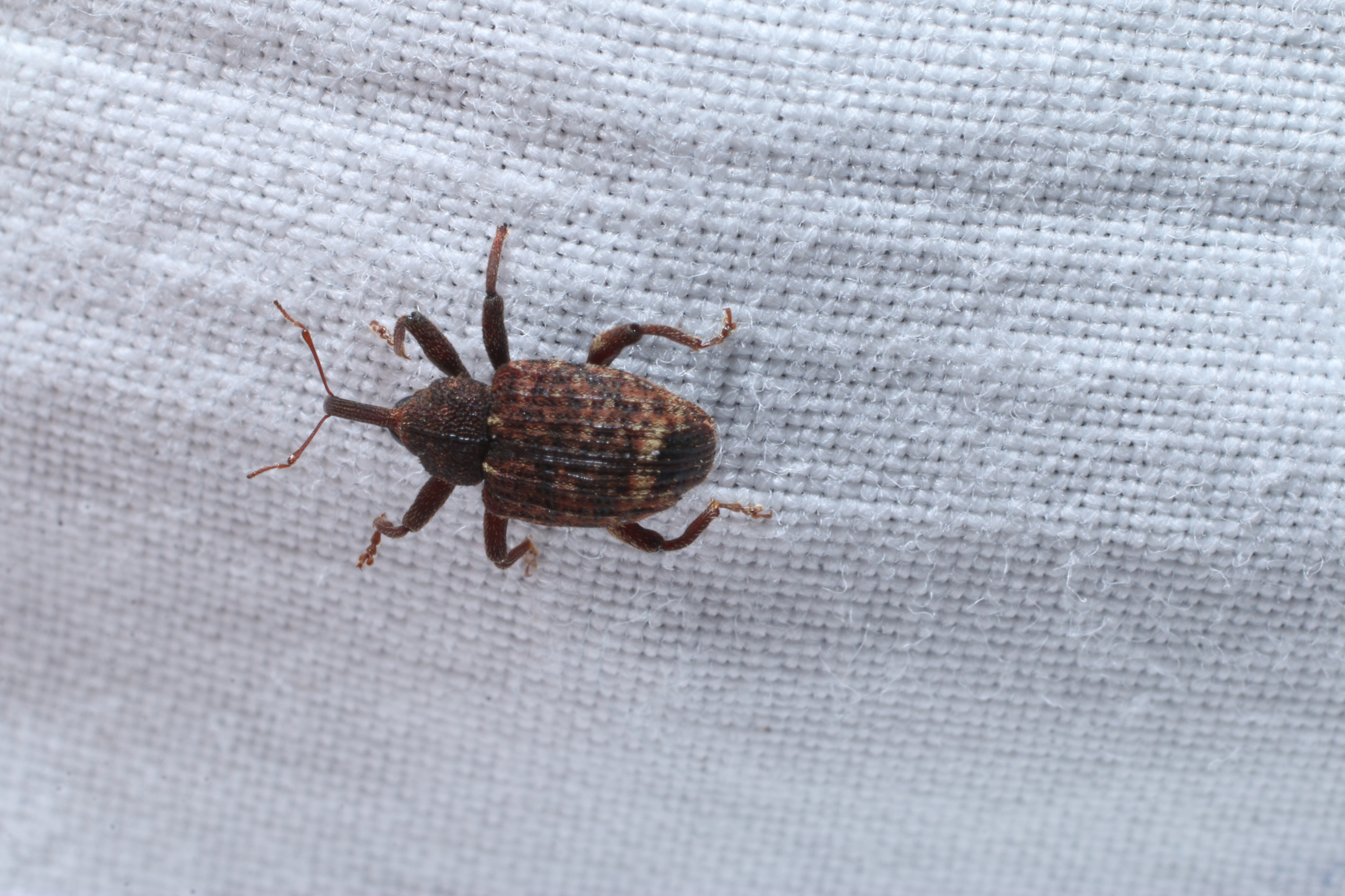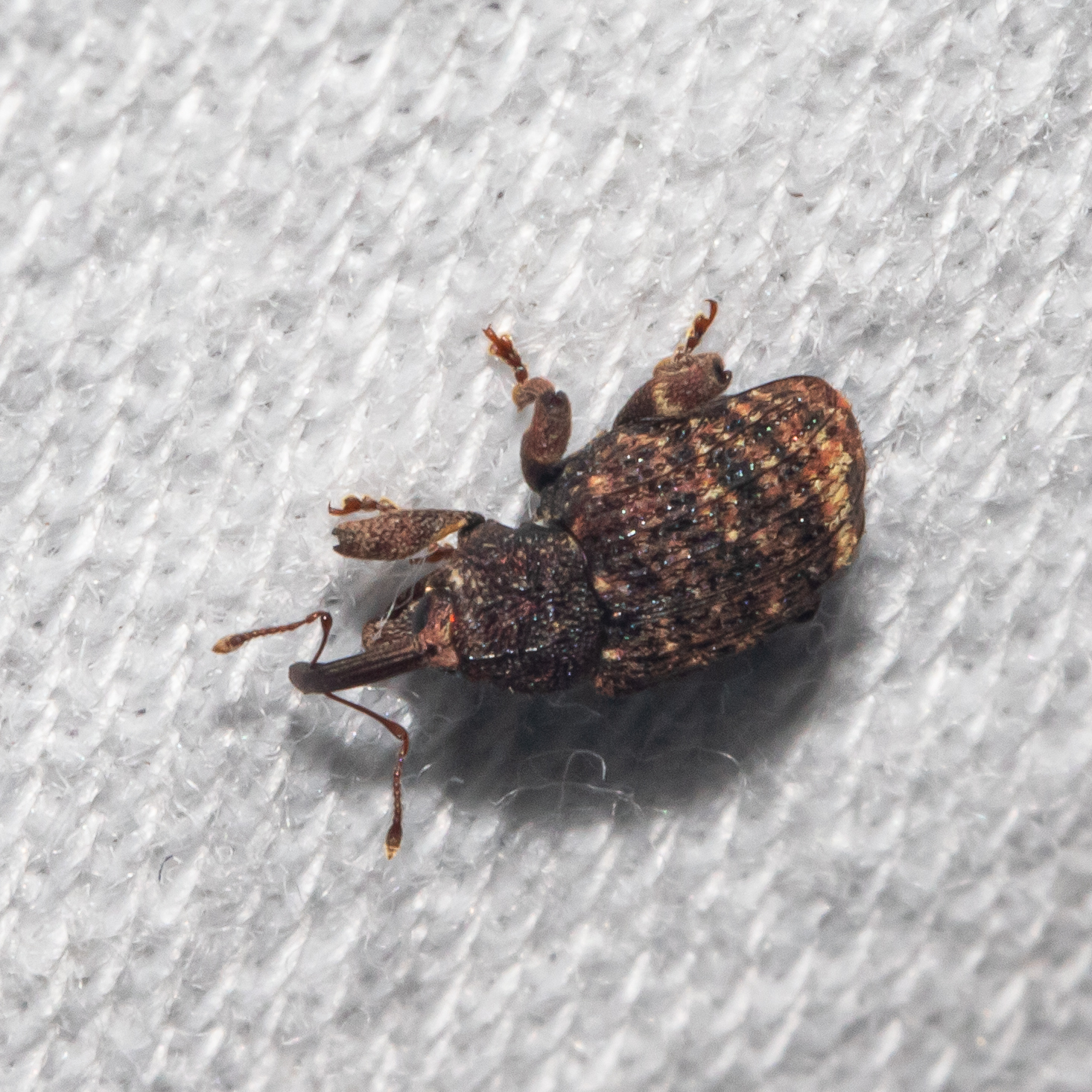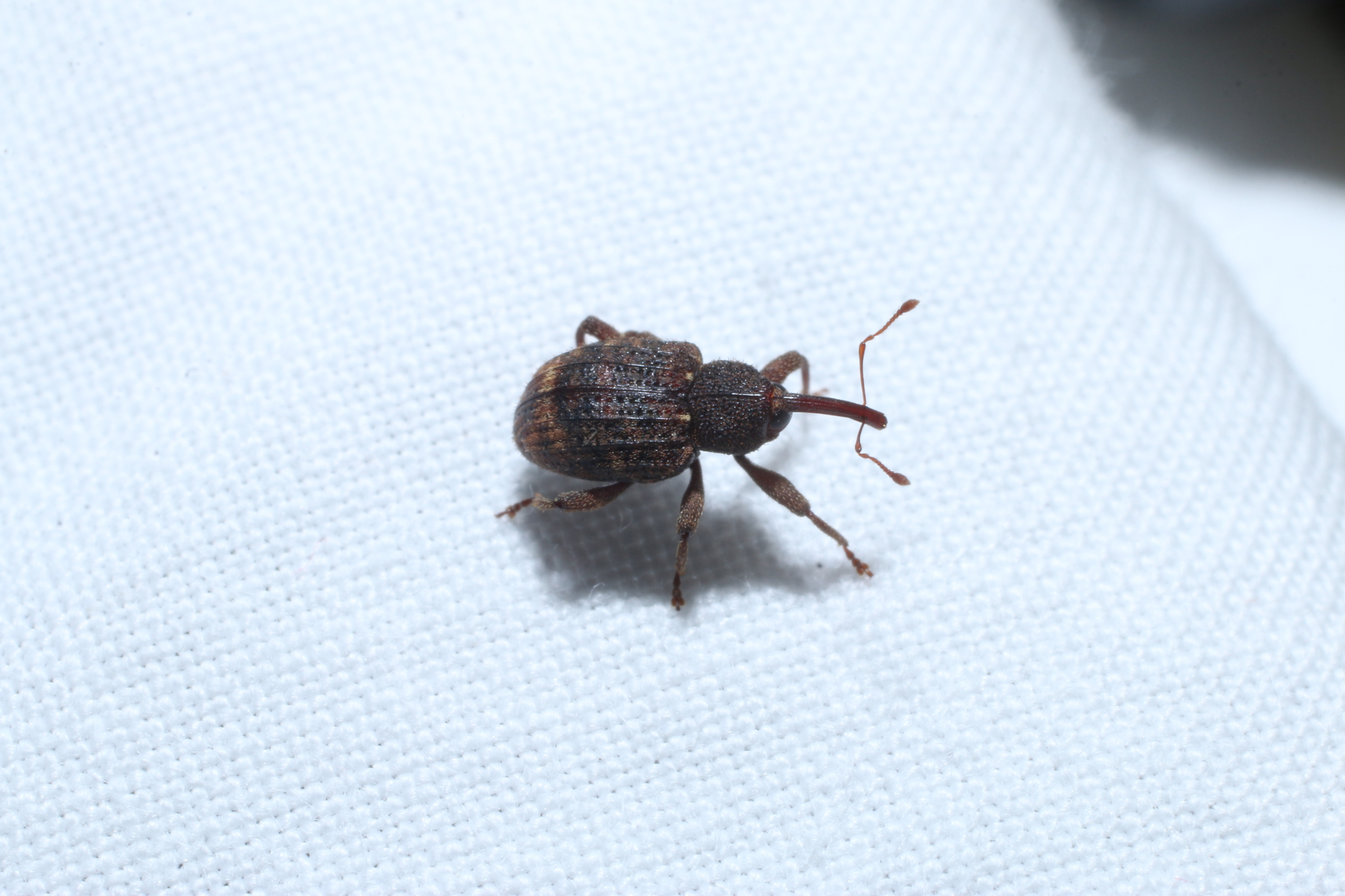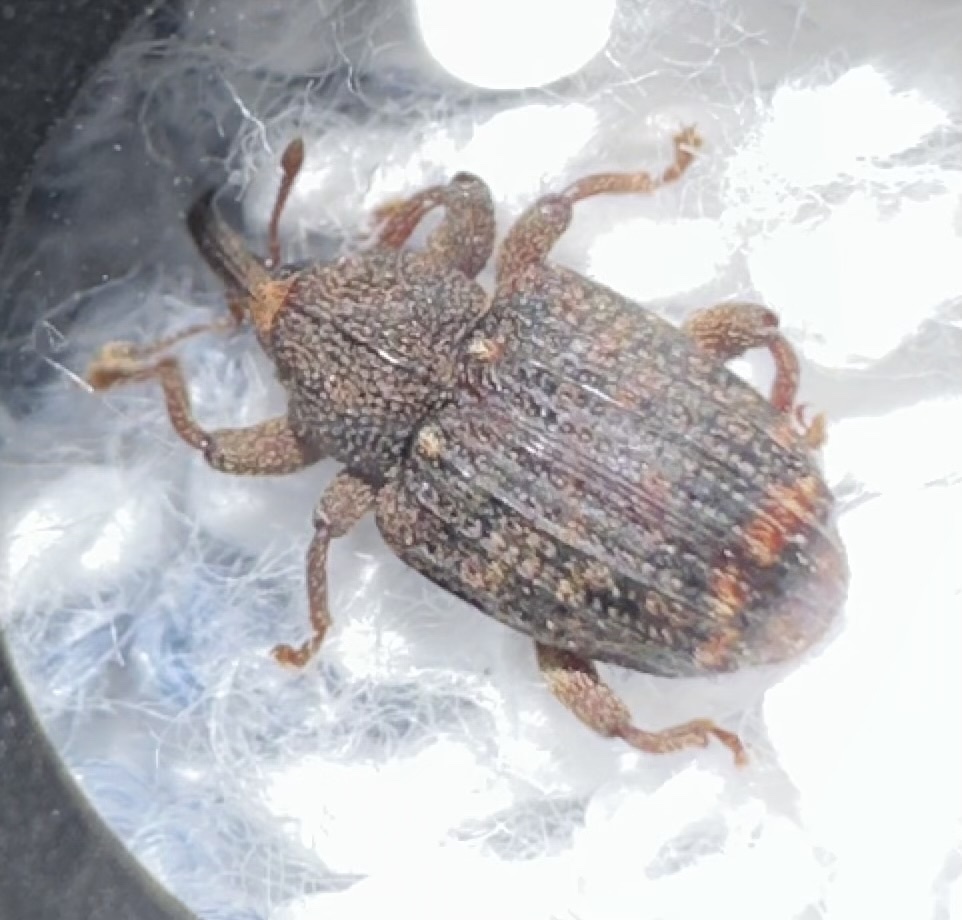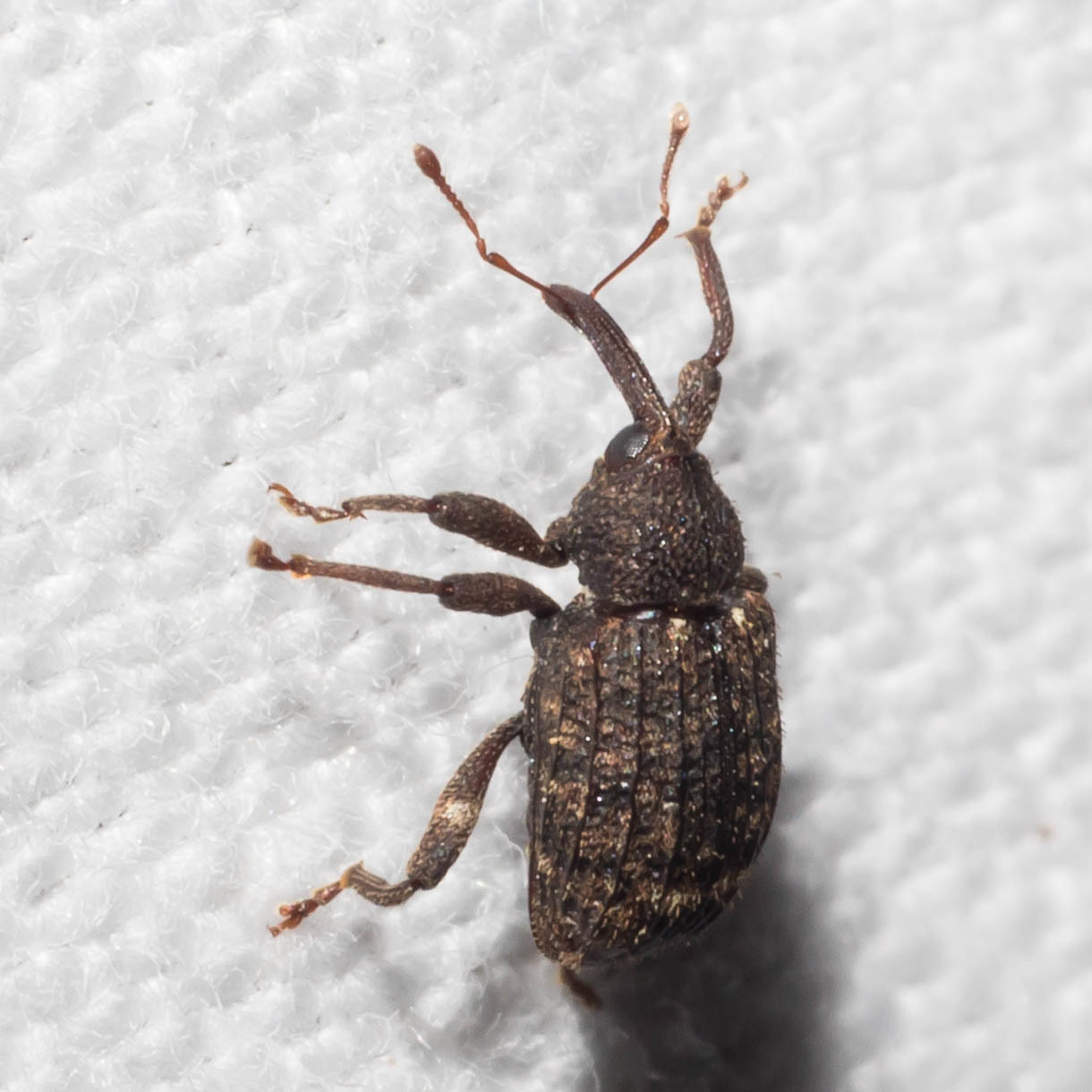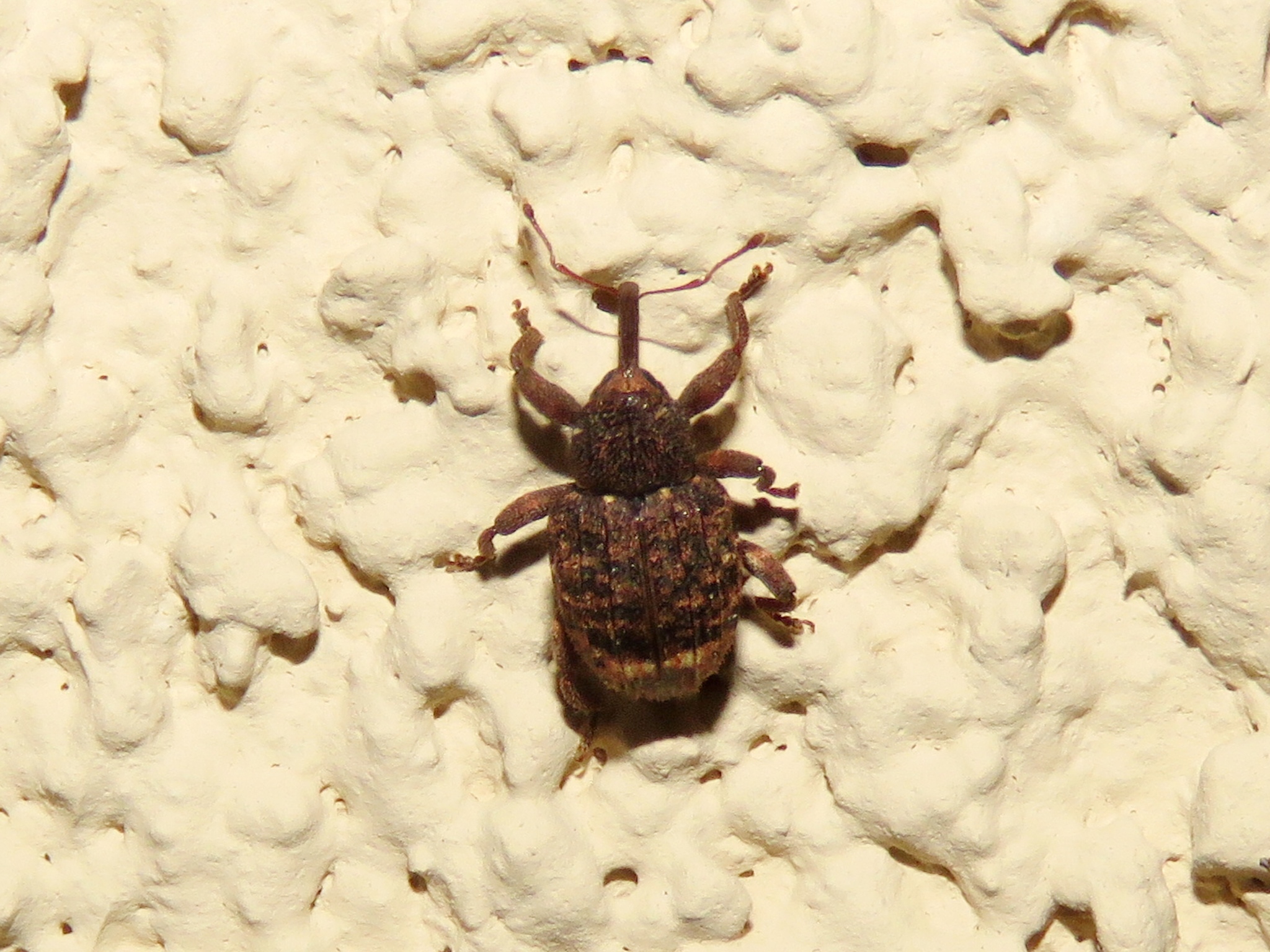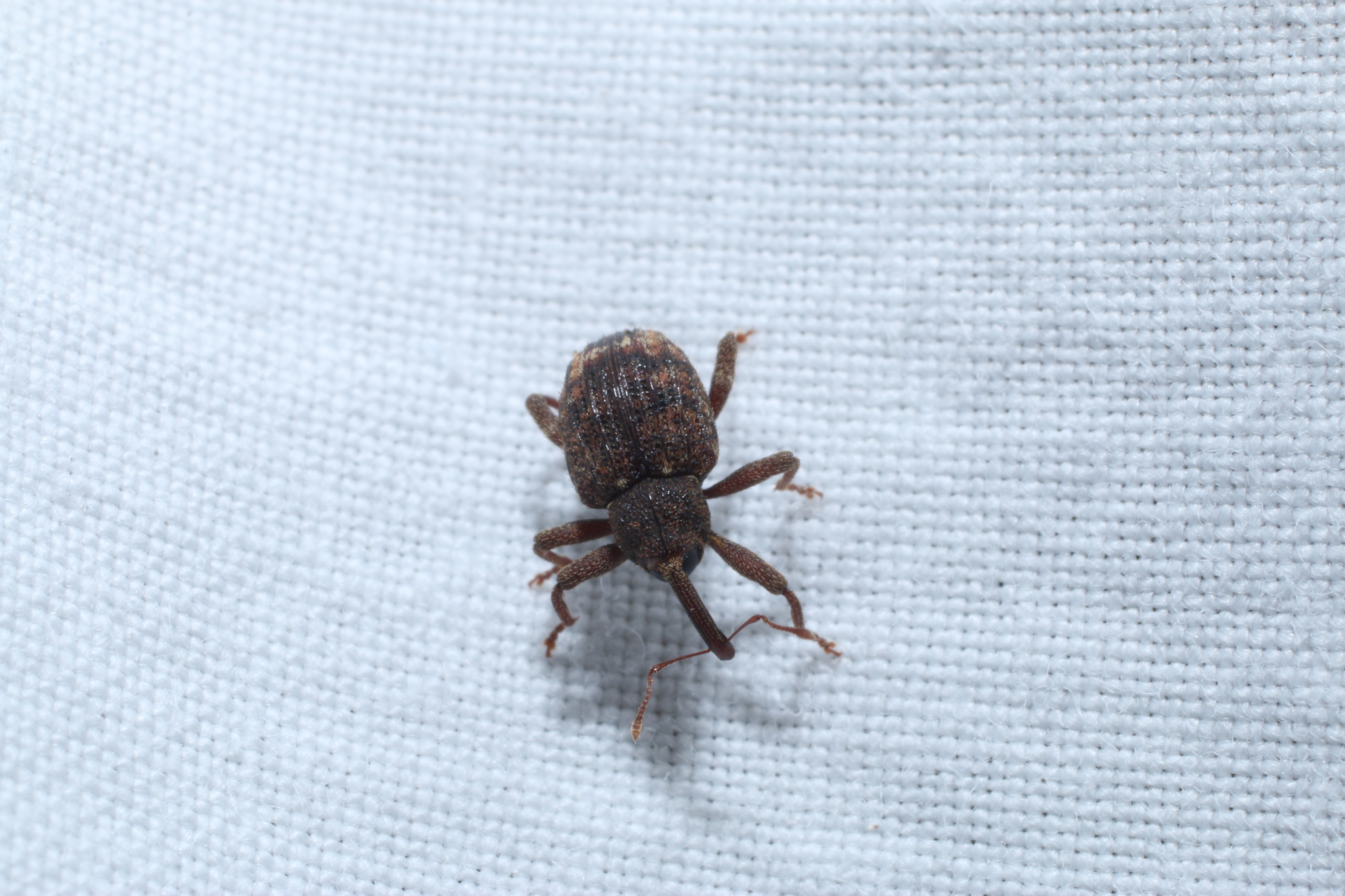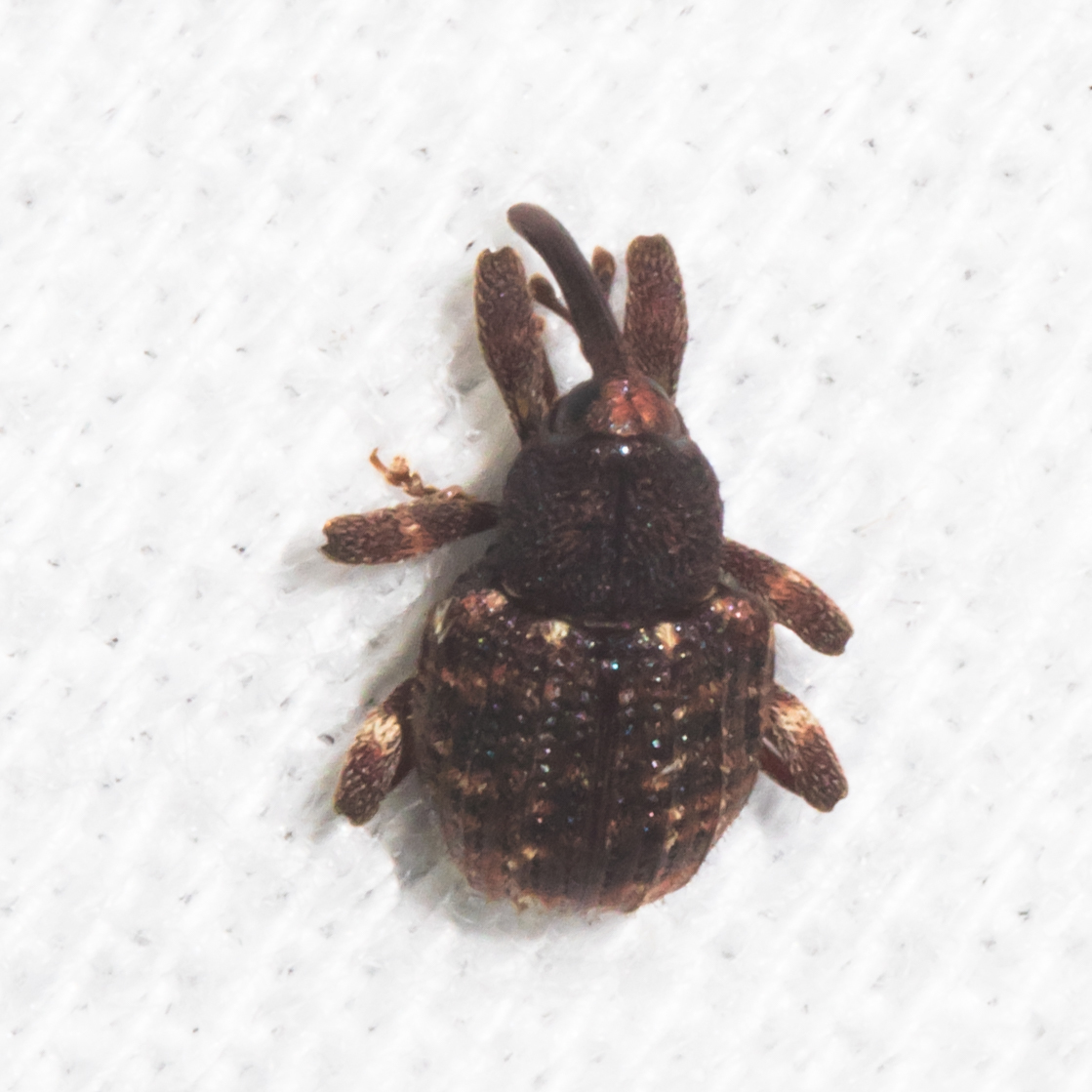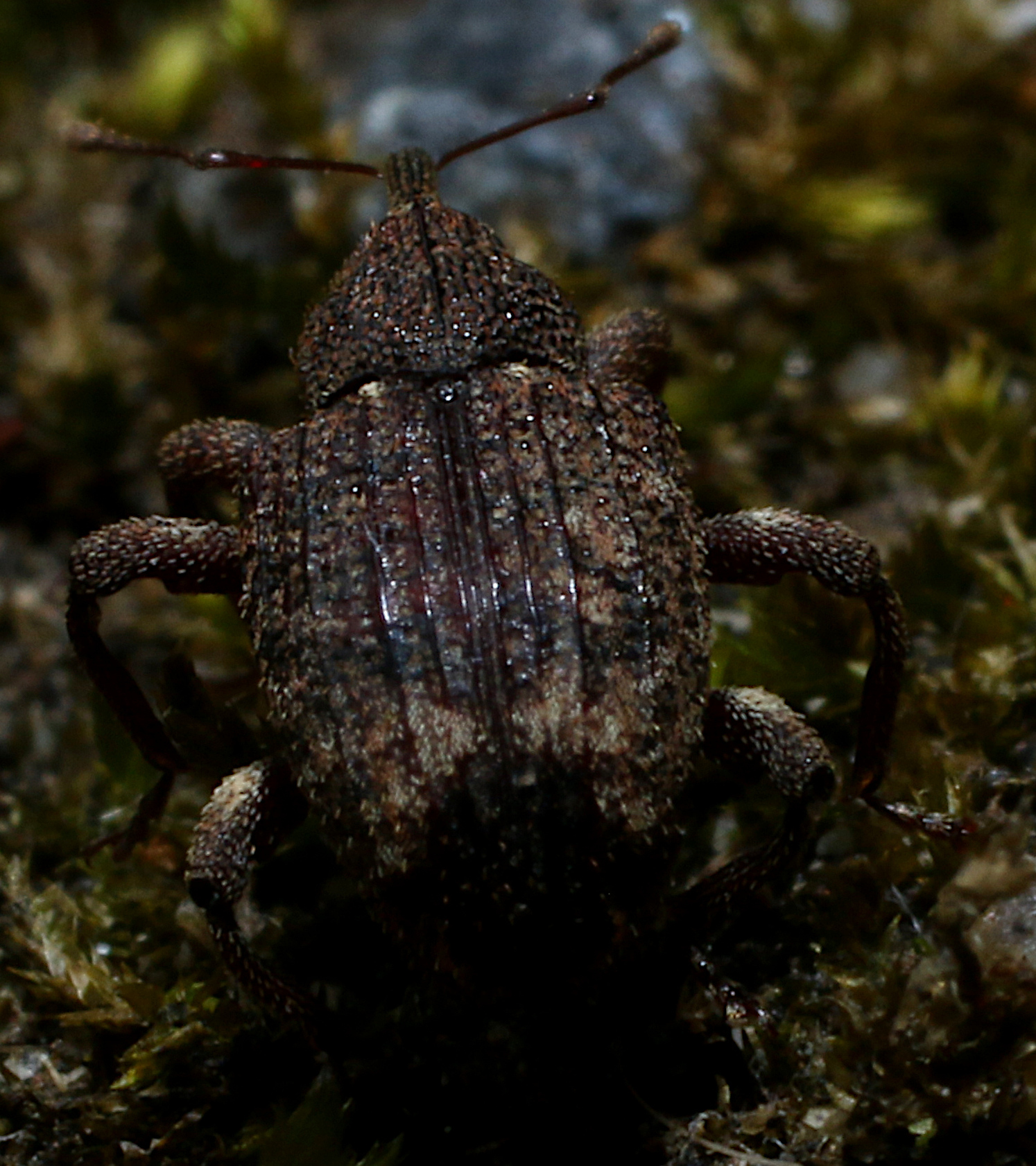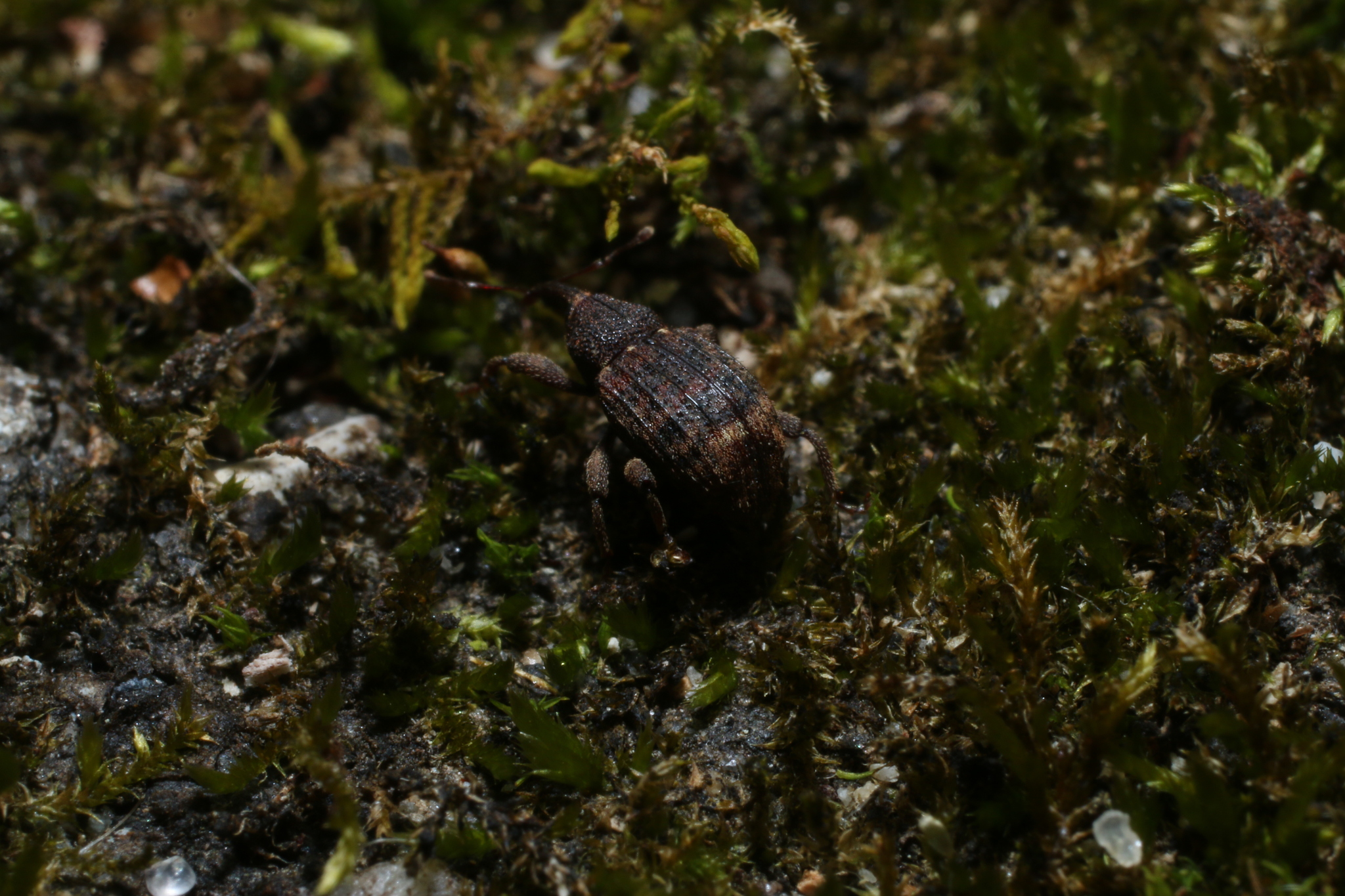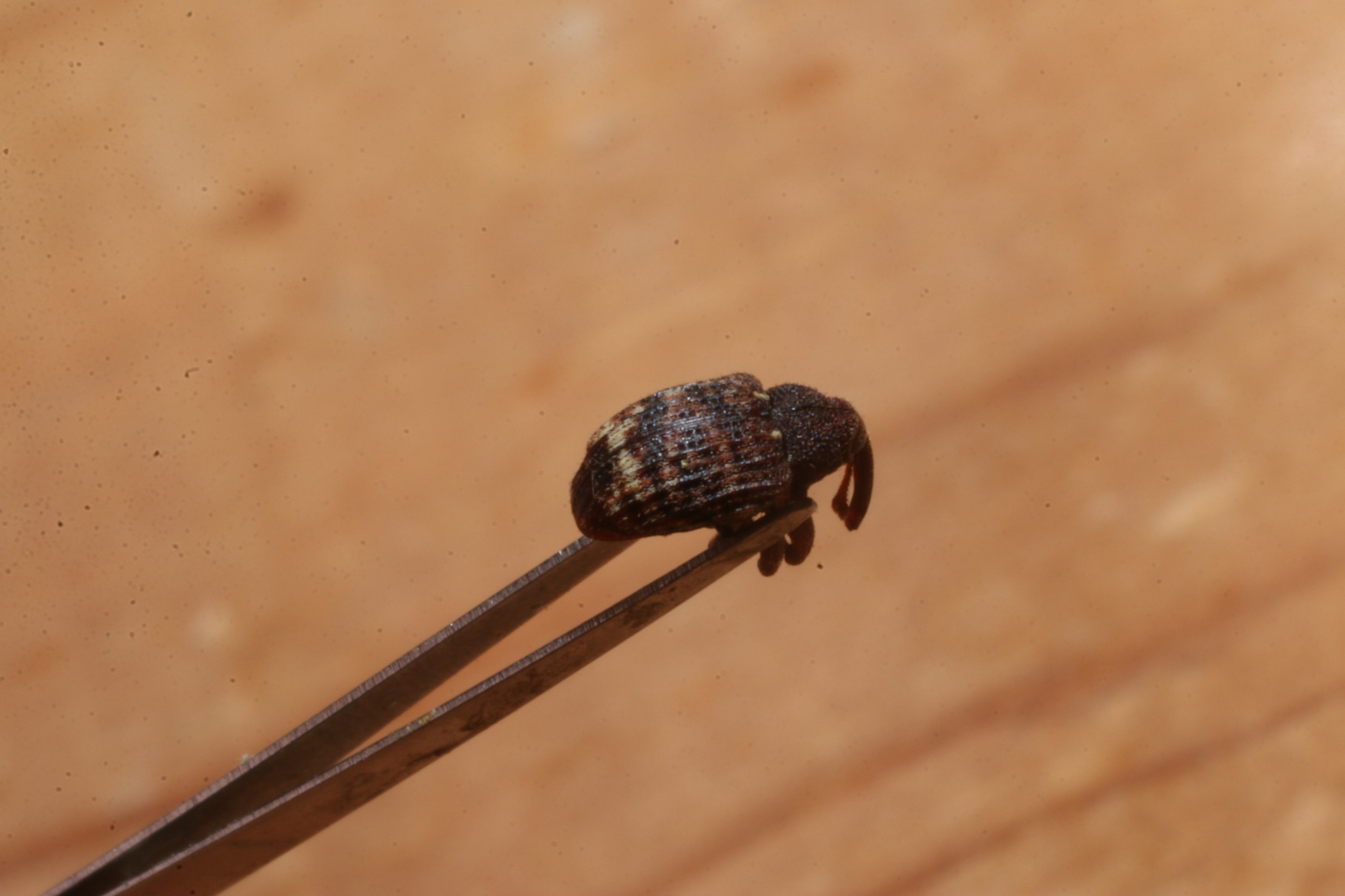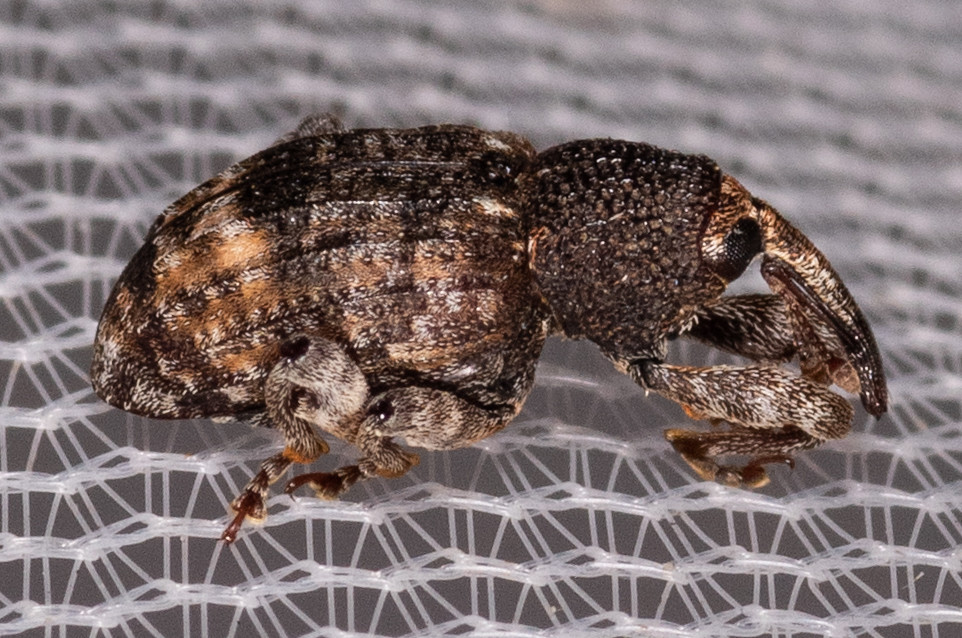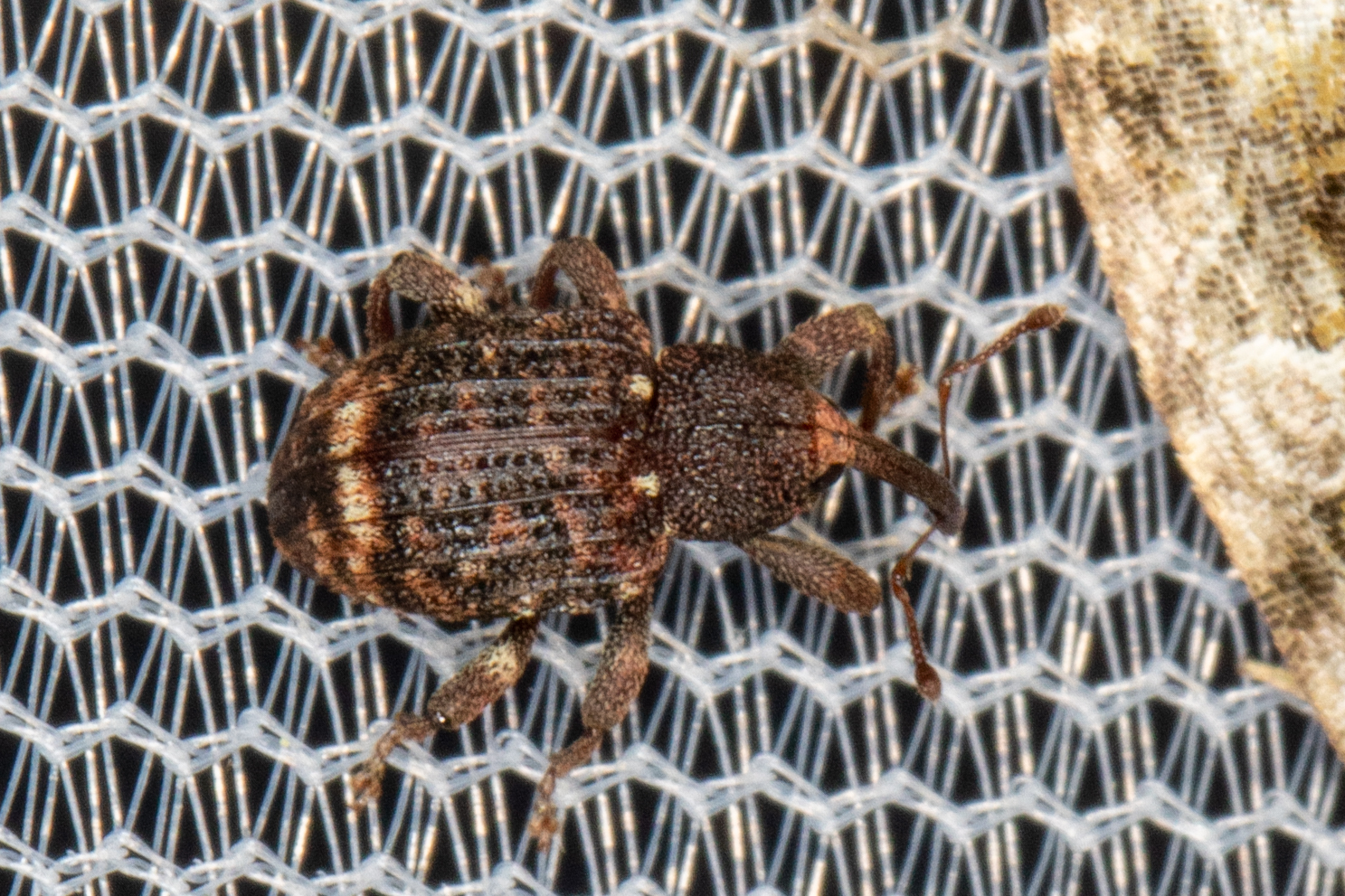Map Snapshot













35 Records
Conotrachelus posticatus in Kent Co., Maryland (8/15/2024). - birdsandbugs21 via iNaturalist.
Seasonality Snapshot
Source: Wikipedia
This article may require copy editing for style and tone. (April 2024) |
| Conotrachelus posticatus | |
|---|---|

| |
| Scientific classification | |
| Domain: | Eukaryota |
| Kingdom: | Animalia |
| Phylum: | Arthropoda |
| Class: | Insecta |
| Order: | Coleoptera |
| Suborder: | Polyphaga |
| Infraorder: | Cucujiformia |
| Family: | Curculionidae |
| Genus: | Conotrachelus |
| Species: | C. posticatus
|
| Binomial name | |
| Conotrachelus posticatus Boheman, 1837
| |
The Conotrachelus posticatus is a species of true weevil within the beetle family Curculionidae. C. posticatus is found in North America. It is on average 3.7–5 mm (0.15–0.20 in) long, and it is present in North America (particularly in Minnesota, Florida, and Texas) all the way to Panama.[1] This species of Conotrachelus breeds in acorns; as a result, its larvae are found within acorns and their larval diet includes acorns.[2] Their growing presence within oak trees has been studied and their effect on oak trees shows that they attack these trees by destroying the seeds within the tree. At times, the seeds can be found to be partially damaged, and requires further studying to understand the activity of the species in relation to oak trees.[3]
Background description
[edit]Conotrachelus posticatus are more prevalent throughout the regions of North America, especially in areas such as Minnesota to Texas and Panama.[1] It has a long nose that bears some resemblance to the trunk of an elephant. The nose has a chewing mouth piece at its end, allowing for it to process its food. C. posticatus is brown and/or black in color.
C. posticatus use acorns as a food source in both its adult and larval stages. Acorns can also be used as nurseries for these particular beetles.[2] Females tend to lay their eggs into the seed of oak trees (in the tissues of green acorns) and larvae feed on the inside of the seed.[2]
C. posticatus breeds in acorns of nine different species of oak trees, and the eggs are often deposited in damaged acorns. Their larval stage lasts between 10 and 30 days, and the second winter of C. posticatus tends be spent under leaves on the ground as an adult. C. posticatus seems to be related to that of the C. naso beetle in range and in how the eggs are deposited.[4]
It remains hidden from its predators during the wintertime inside of soil, after it has chewed into the hole of an acorn seed. The natural relationship between the C. posticatus and the acorn seed can pose a threat to the oak trees. Predators of C. posticatus reduce the threat it poses to oak trees.[2]
One feature of C. posticatus is that it uses a stridulatory mechanism to produce sound.[1] This is done by scraping the elytral stridulitra and the plectra together to produce frequencies. There are demonstrable differences that exist between the stridulations of this beetle and other beetles within its genus. Individual beetles are capable of several different speeds and frequencies of stridulations. Sound production can be induced by agitation or rough handling of the beetles.[5]
Life history
[edit]The article, "Biology and Life History of Acorn-Infesting Weevils of the Genus Conotrachelus (Coleoptera: Curculionidae)" by Lester P. Gibson, analyzes the life history of the C. naso LeConte beetle, the C. posticatus Boheman beetle, and the C. carinifer Casey beetle. This study had begun in October 1960 with Ohio acorns, and unfolded two years later in 1962 to include more oak trees in the U.S.[3] When looking particularly at the life history of C. posticatus, it was revealed that the larvae of the C. posticatus species had gone through 5 instars, where they emerged in 14 days from bur oak acorns and 30 days from the black acorns that were conducive to this study. It was also noted that the "emergence method, cell formation, and prepupal and pupal activity patterns are similar to those of C. naso larvae."[3]
Additionally, the study found that C. posticatus larvae overwinter within the soil, but the adults tend to hibernate underneath leaves. This showed the researchers that the adult C. posticatus emerges in the late spring and early summer, where it "oviposits in acorns, and passes the second winter as an adult."[3] Nevertheless, there were certain limitations to what the researchers were able to find out about the species in terms of how long the adult can live after surviving its second winter. The researchers also noted that there was very little information given on the biology of the C. posticatus, but that the species was similar to that of the C. naso species as they both are found in areas like Panama.[3] Much of this study was done to examine the longevity and adult emergence of C. posticatus, and their breeding activity in Crataegus fruits, fresh hickory nuts, and black oak acorn meats. The results showed that most of the C. posticatus beetles would feed, lay their eggs, and produce the most larvae in the black oak acorn meats.[3] Overall, this species seems to adapt, utilize, and occupy acorns as a resource for survival.
The Conotrachelus and acorns
[edit]The species of Conotrachelus in all stages of its life (larvae, pupae, and adulthood), breeds within acorns specifically in the United States and Canada.[6] The physical description and behavior of the Conotrachelus species is inspected in the research study, "Systematics of the Acorn-Infesting Weevils Conotrachelus naso, C. carinifer, and C. posticatus (Coleoptera: Curculionidae)", by Lester P. Gibson. This research study examines a detailed view of the larvae, pupae, and the adulthood of the C. naso, C. carinifer, and C. posticatus. In particular, the C. posticatus, in its adult stage is described as its color being "dark reddish-brown",[6] its head being "densely punctate",[6] and its special characteristics, including its dense prothorax, its legs, and its genitalia. Much of this physical description of the adult weevil beetle is to explain how and why this beetle is able to take hold of and utilize acorns to its own advantage.
For instance, in the article, "Acorn Weevil (Coleoptera: Curculionidae) Predation Dynamics in a Mississippi Bottomland Hardwood Forest", by Justin P. Williams and Tracy S. Hawkins, illustrates how there is a sense of predation in acorns for individual trees that produce such acorns, because of the weevil beetle. The researchers had placed cone emergence traps in a periodically flooded forest to obtain weevil population parameter estimates and understanding tree-to-tree variability in acorn predation rates.[7] By having done these parameters to analyze the predation rates of weevils, it can help to combat the reduction of food resources that wildlife needs, and preventing these beetles from replenishing seedling placement. The results revealed that the Conotrachelus weevils were seen as "secondary acorn predators",[7] yet they were also seen as helping to regenerate bottomland forests from being utterly gone, because they are able to "outwinter as adults and infest 20-65% of spring-germinating acorns on the soil surface".[7] Even though the Conotrachelus beetle may cause harm to acorns, it can also bring about more abundance in the quantity of the forest.
Global effects of the C. posticatus beetle
[edit]The C. posticatus beetle has been regarded as one of the seven species of Curculionidae to cause a threat to multimillion-dollar avocado industries.[8] Within the research study, "On the identity of a U.S. intercepted Conotrachelus Dejean (Coleoptera: Curculionidae) with avocado (Persea americana)", by Maria Lourdes Chamorro and Maxwell V. L. Barclay, it strives to analyze the identification of non-native weevils and their effect on local agriculture. Firstly, this study begins by comparing adult weevils with "male and female type specimens of C. lobatus Champion, C. squamifrons Champion and C. scoparius Champion."[8] to be able to help those that are growers on agricultural lands to absorb and understand all of the organisms' biology for better preventative measures against the growing threats from the species of weevil beetles. Further, this study found that the C. posticatus most closely looks similar to that of the Conotrachelus lobatus, (where this particular species is found North America, north of Mexico).[8] Other notable physical descriptions regarding the C. posticatus is that, this species, amongst others related species (C. carinifer Casey and C. naso LeConte) "all have…longitudinal median prothoracic carina; mesosternum with anterolateral angles truncate and prominent".[8] This similarity amongst these species can further prove to show how common it may be to mix up the different beetles and categorize them as the same beetle due to their physiology. When looking at the discussion section of this study, the identification of the C. lobatus is a non-native species with avocados and can frequently be mistaken for the U.S. native C. posticatus. Due to this misconception between both of the species, it can introduce non-native species into agricultural systems that may not be able to thrive under such conditions.[8] The results had concluded that, posticatus individuals from Central America differ from those in the U.S. in having ventral segments less closely punctured."[8] The nature of this physical relationship between the differing species of weevil beetles illustrates a greater importance of understanding how invasive species can cause for harm to an environment, and ecosystem, and even at times to human health.
References
[edit]- ^ a b c Murray, Tom; Quinn, Mike; Belov, V.; Hess, Marci (30 July 2023). "Species Conotrachelus posticatus". Bug Guide. Retrieved 5 April 2024.
- ^ a b c d "Acorn Weevil (Conotrachelus posticatus)". InsectIdentification.org. 2 January 2022. Retrieved 5 April 2024.
- ^ a b c d e f Gibson, Lester P. (1 September 1964). "Biology and Life History of Acorn-Infesting Weevils of the Genus Conotrachelus (Coleoptera: Curculionidae)". Annals of the Entomological Society of America. 57 (5): 521–526. doi:10.1093/aesa/57.5.521.
- ^ Baker, Whiteford L. (February 1972). Eastern forest insects. Miscellaneous Publication. Vol. 1175. Washington: U.S. Dept. of Agriculture, Forest Service.
- ^ Gibson, Lester P. (1967). "Stridulatory Mechanisms and Sound Production in Conotrachelus (Coleoptera: Curculionidae)". Annals of the Entomological Society of America. 60 (1): 43–54. doi:10.1093/aesa/60.1.43. ISSN 1938-2901.
- ^ a b c Gibson, Lester P. (1 September 1965). "Systematics of the Acorn-Infesting Weevils Conotrachelus naso, C. carinifer, and C. posticatus (Coleoptera: Curculionidae)1". Annals of the Entomological Society of America. 58 (5): 703–712. doi:10.1093/aesa/58.5.703. ISSN 1938-2901.
- ^ a b c Williams, Justin P.; Hawkins, Tracy S. (June 2020). "Acorn Weevil (Coleoptera: Curculionidae) Predation Dynamics in a Mississippi Bottomland Hardwood Forest". Castanea. 85 (1): 159–168. doi:10.2179/0008-7475.85.1.159. ISSN 0008-7475.
- ^ a b c d e f Chamorro, Maria Lourdes; Barclay, Maxwell V. L. (2 November 2018). "On the identity of a U.S. intercepted Conotrachelus Dejean (Coleoptera: Curculionidae) with avocado (Persea americana)". Biodiversity Data Journal. 6 (6): e26362. doi:10.3897/BDJ.6.e26362. ISSN 1314-2828. PMC 6226545. PMID 30425604.
Further reading
[edit]- Lobl, I.; Smetana, A., eds. (2013). Catalogue of Palaearctic Coleoptera, Volume 7: Curculionoidea I. Apollo Books. ISBN 978-90-04-26093-1.
- Lobl, I.; Smetana, A., eds. (2013). Catalogue of Palaearctic Coleoptera, Volume 8: Curculionoidea II. Apollo Books. ISBN 978-90-04-25916-4.
